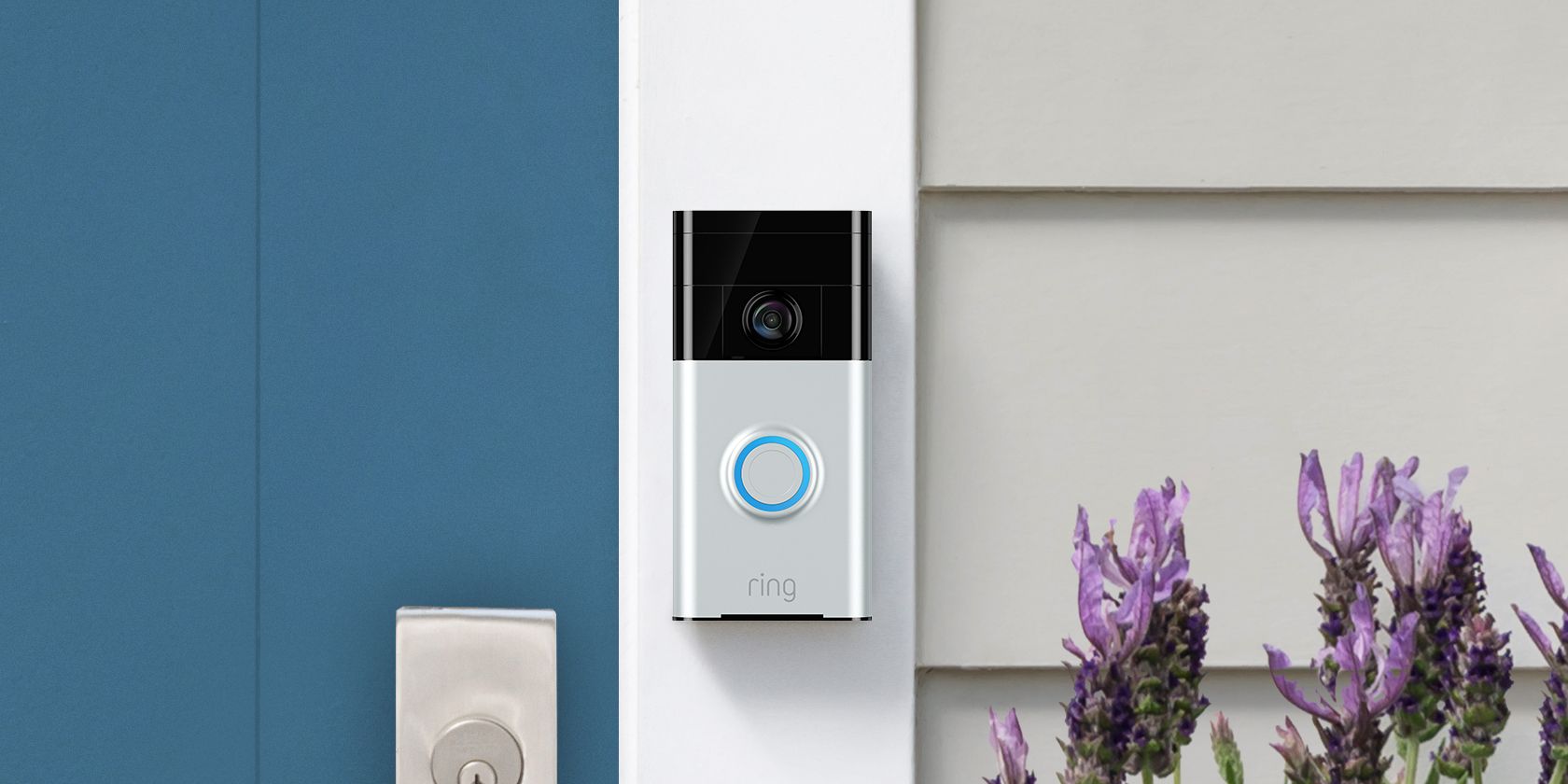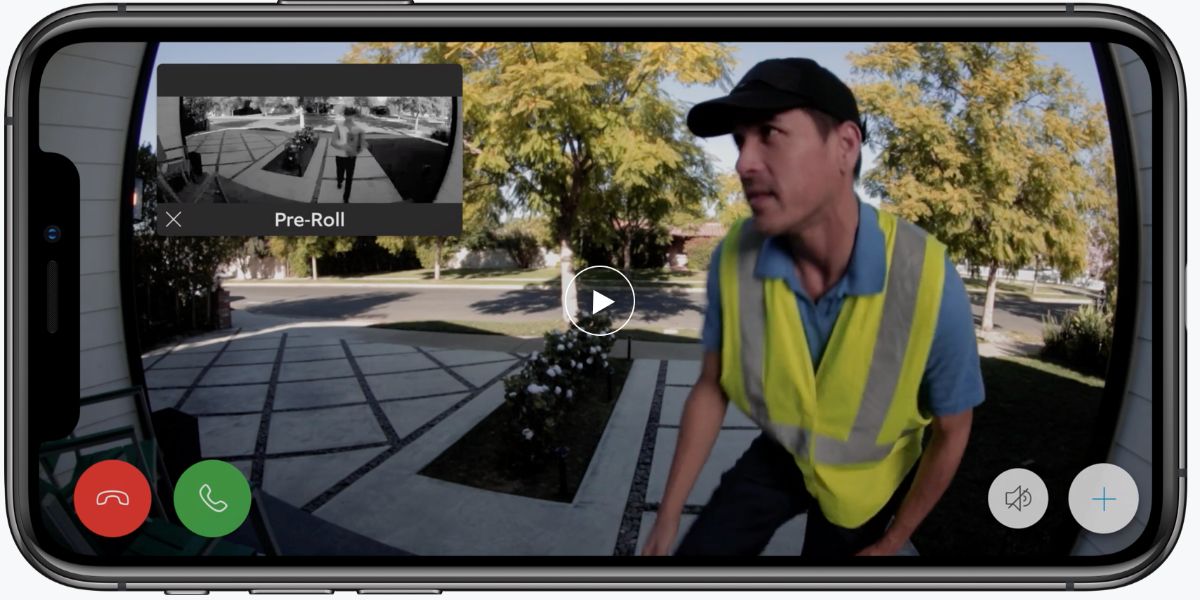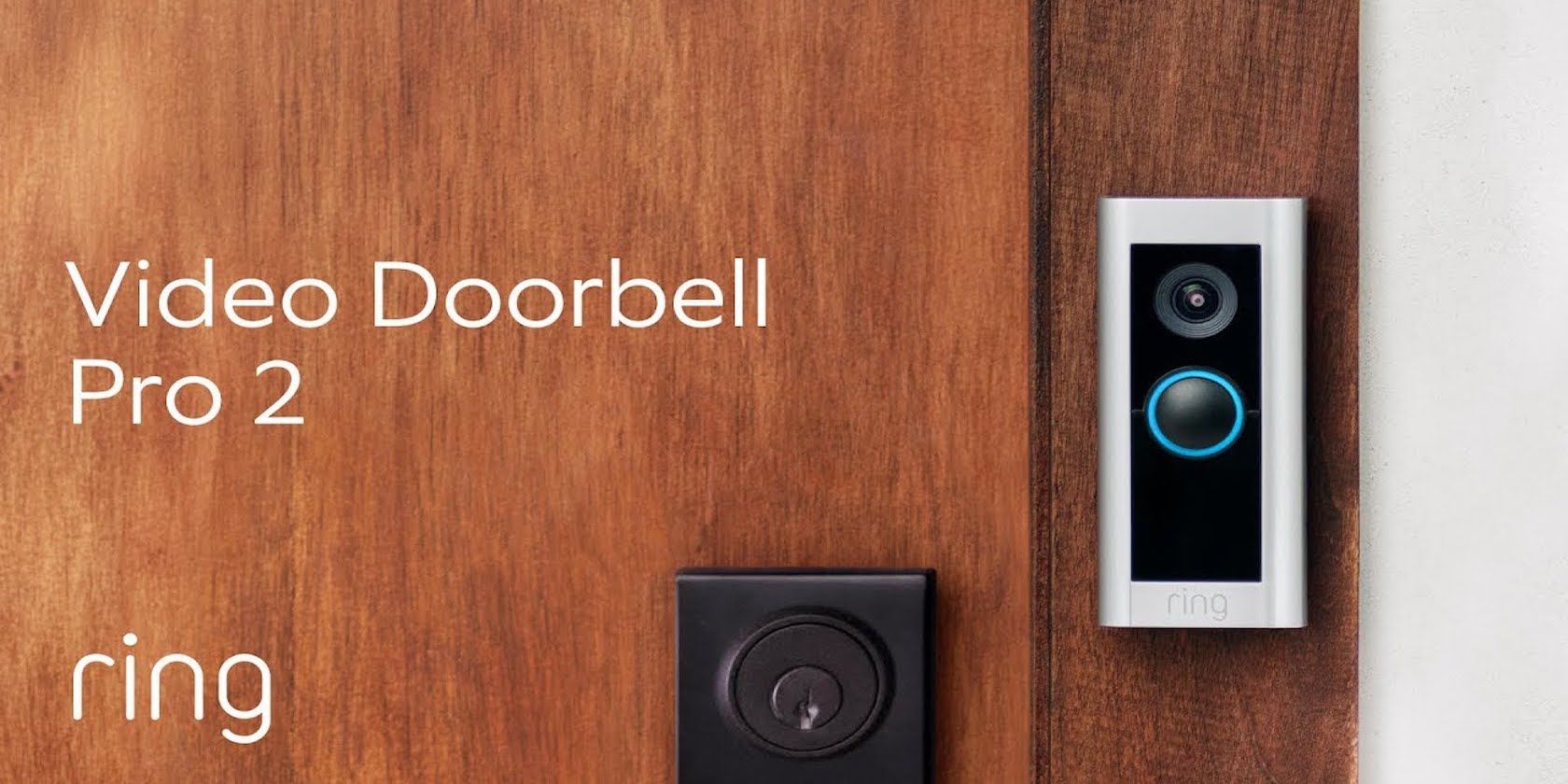Ring offers a video end-to-end Encryption feature to select Ring video devices. If you’d like to add an extra layer of security to your home, you’ll want to enable this exciting security feature. We’ll show you how.
What Is Video End-to-End Encryption?
To understand Ring end-to-end encryption, it helps to have an overview of how a Ring doorbell works. Video end-to-end encryption keeps the video communication between Ring and your mobile devices private. With this feature, only your selected smartphones can view any videos created on your Ring device.
Aren’t My Ring Devices Secure Without Video End-to-End Encryption?
For the most part, yes. Per the Ring.com official end-to-end encryption press release, the company encrypts all device videos once sent to the cloud and stored on Ring’s servers.
With Ring and other devices being vulnerable to security breaches in the past, extra security may be essential. It’s kind of like adding a deadbolt to your door instead of just relying on the doorknob lock alone. Another example of adding extra security might be taking steps to keep your cloud storage extra secure.
Once you've enabled this end-to-end encryption, even Amazon and Ring can't access your device's video recordings. The additional security also means that in most cases, Ring won’t be able to provide any clips taken from your devices to law enforcement without your permission.
Why Not Add Extra Security?
In addition to the limitations listed below, Ring encryption comes at the price of less convenience. To use the earlier analogy again, your door with the added security of two locks now requires two separate keys to open it. If you lose one of the keys, you're locked out of your own security system.
Which Devices Support End-to-End Encryption?
Though Ring indicates it will support all of its security devices in the future, not all work with the new encryption feature at this time. Currently, the Ring products that support the feature are:
- Ring Video Doorbell Pro
- Ring Video Doorbell Pro 2
- Ring Video Doorbell Elite
- Ring Spotlight Cam Wired
- Ring Spotlight Cam Mount
- Stick Up Cam Elite
- Ring Stick Up Cam Elite (2nd Generation)
- Ring Stick Up Cam Wired (2nd Generation)
- Stick Up Cam Plug-in (3rd Gen)
- Stick Up Cam Wired (3rd Gen)
- Stick Up Cam Solar (3rd Gen)
- Indoor Cam
- Ring Floodlight Cam
- Ring Floodlight Cam Wired Pro
Unfortunately, Ring has excluded battery-powered video doorbells and cameras from accessing the feature at this time.
In addition to one of the products above, you’ll need either an iOS device running iOS 14+ or better or an Android device running Android 9 or better. You’ll also need the latest version of the Ring app for iOS or Android.
One thing to consider is that video end-to-end encryption is still in the technical preview phase, so some of this information may change. If you cannot find these menus in the app, or you receive a notification that the end-to-end encryption service is not available, it would be best to be patient until Ring updates the service to include your device.
How to Enable Ring Video End-to-End Encryption
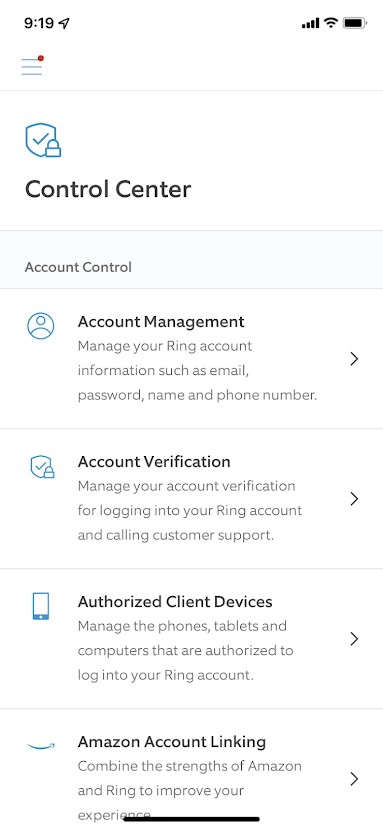
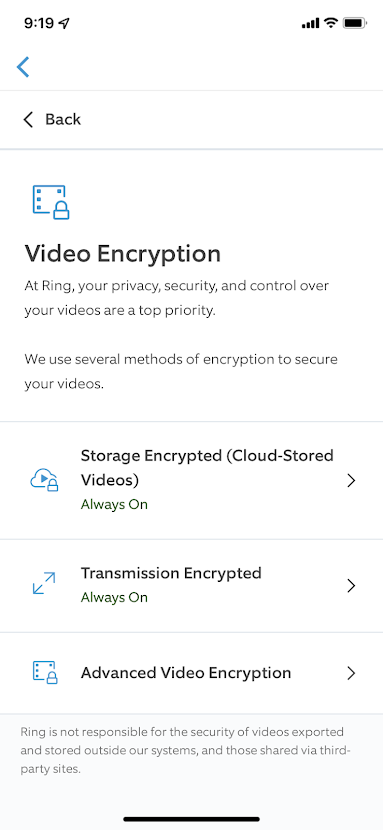
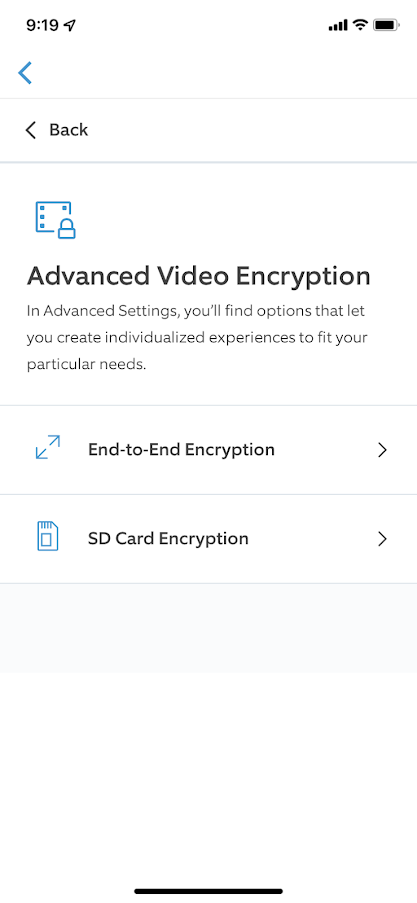
Start here to enable end-to-end video encryption on your Ring devices:
- Ensure that you have downloaded or updated to the most recent version of the Ring app.
- In the Ring app, tap the three lines in the upper left corner.
- Tap Control Center.
- Scroll down and tap on Video Encryption.
- Tap Advanced Video Encryption.
- Tap End-to-End Encryption.
- Tap Enable End-to-End Encryption.
- Tap GET STARTED.
Finalizing Your Setup
You’ll follow the enrollment instructions for your mobile device. This process won’t take long, and the app will walk you through each step. Here's an overview:
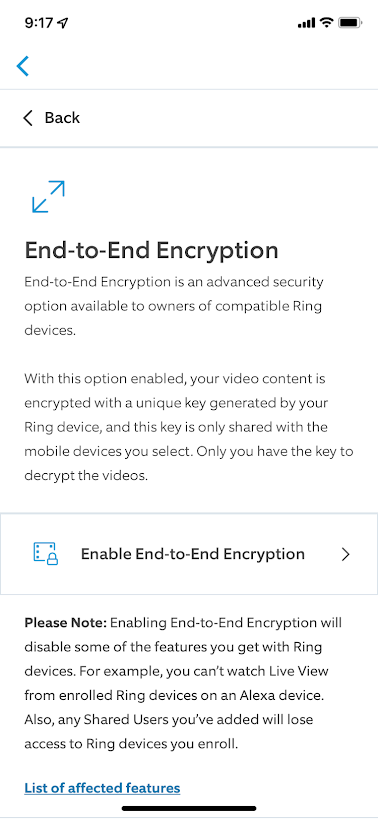
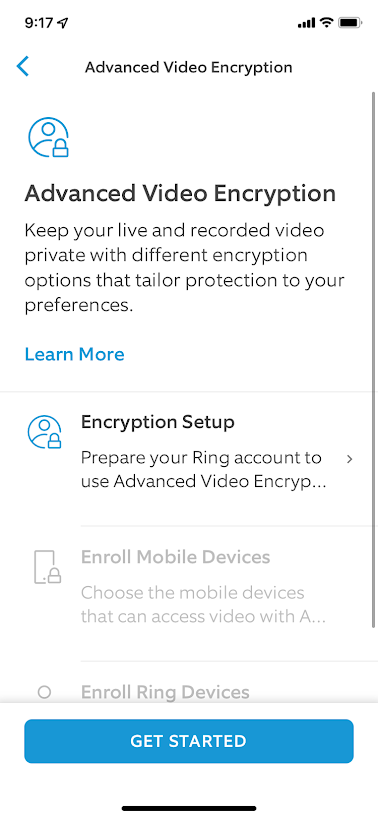
You’ll Generate a New Passphrase. When entering your passphrase, make sure you include all hyphens and do not include any spaces.
It’s important to note that this passphrase will not be recoverable if you forget it, so you should probably write it down. If this passphrase is lost or unavailable, you will be forced to re-enroll your mobile device. It’s also possible that you’ll lose access to all the end-to-end encrypted videos you have already recorded.
Next, tap Resume Setup. This action will allow you to complete your mobile device enrollment in the encryption service. After completing this step, you’ll need to enroll your Ring device. This action is done first by tapping Resume Setup a second time and following the in-app instructions.
The final step is to test your device to ensure that the video end-to-end encryption service is working. Do so by pressing the doorbell or triggering a motion event on your Ring product. This action will initialize your specific device for the service.
That’s it. You’ve now completed enrollment of your Ring device service.
Limitations of the End-to-End Encryption Service
This service might not be suitable for everyone. You'll have to weigh the benefits of the additional security against the downside of some reduced functionality of your Ring device.
By enabling the video end-to-end encryption service, you may negatively affect some critical features of your Ring product. Shared Users you’ve added to your Ring device may lose access, and services like Amazon Alexa Live View might no longer work.
Ring maintains a list of the additional features that may be affected by this service:
- Shared Users.
- Viewing encrypted videos on Ring.com, the Windows desktop app or the Mac desktop app.
- Using Live View from multiple mobile devices simultaneously.
- Seeing camera previews on the Dashboard.
- Sharing videos or links.
- Using the Event Timeline.
- Seeing Rich Event Notifications.
- Watching Ring videos on Amazon Echo Show, FireTV, or FireTablet.
- Watching encrypted videos on third-party devices.
- Using Alexa Greetings.
- Using Quick Replies.
- Using Bird's Eye View.
- Using Virtual Security Guard.
If these features are vital to you, you might want to skip the encryption setup. To roll back your changes, start at step 3 above and then choose to disable video end-to-end encryption.
Enjoy a More Secure Ring Device
Ring customers can take even greater control of their home while adding a layer of protection against digital intruders. By enabling video end-to-end encryption on your Ring device, you can ensure that outsiders won’t have unauthorized access to video of you and your family.

